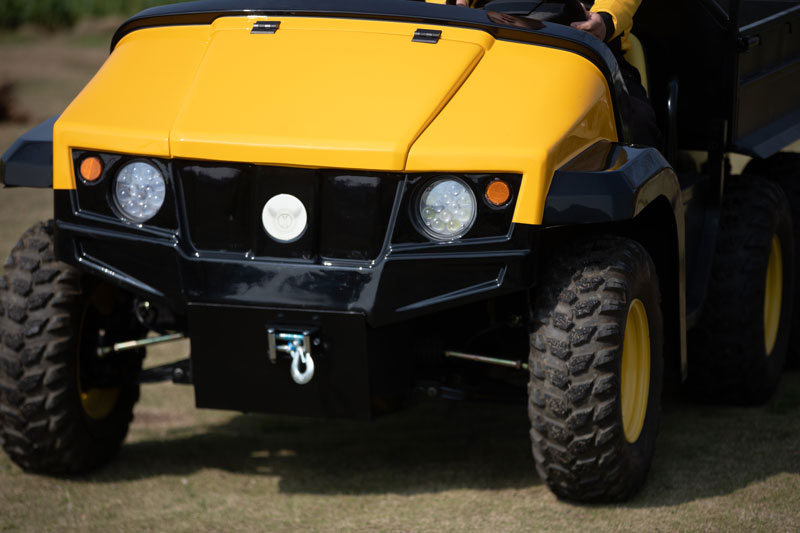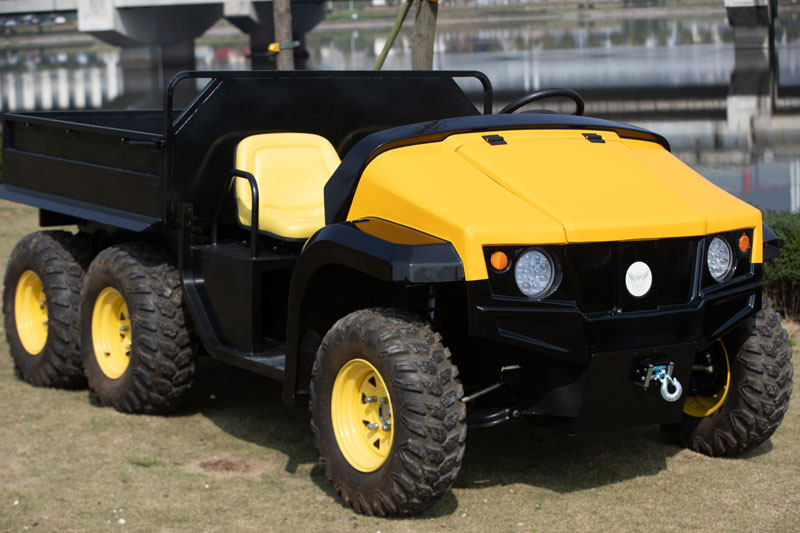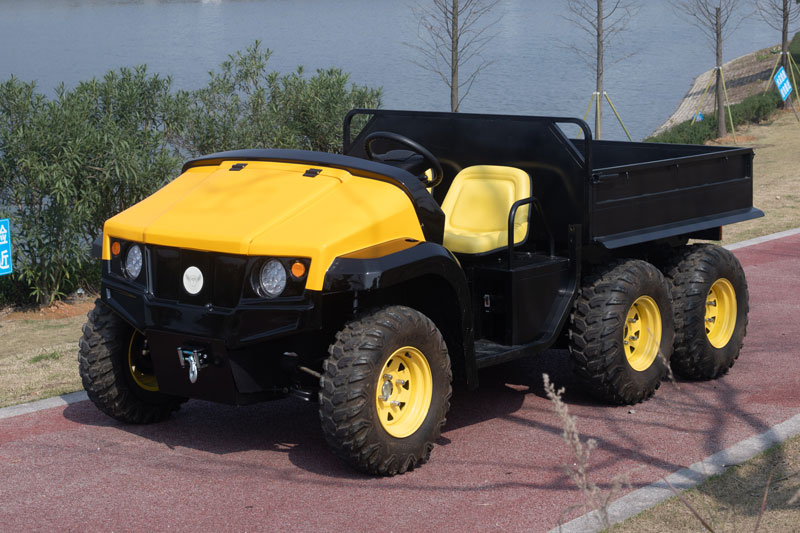Electric utility vehicles (UTVs) are an important tool in modern agriculture, industry and leisure, and the electric motor, as its core component, directly affects the performance and experience of the vehicle. Electric UTV mainly adopts two types of AC motor and DC motor. This paper will take MIJIE18-E six-wheel electric UTV produced by our company as an example to discuss the similarities and differences between AC motor and DC motor in electric UTV.


Basic introduction of AC motor and DC motor
AC Motor (AC Motor) : AC motor uses AC power supply, the main types include three-phase asynchronous motor and synchronous motor. In MIJIE18-E, we used two 72V 5KW AC motors.
DC Motor (DC Motor) : DC motor uses DC power supply, the main types include brush motor and brushless motor. Dc motor has been widely used in various electric equipment for a long time because of its simple control logic.
Performance comparison
Efficiency: AC motors generally have higher efficiency than DC motors. This is because AC motors are more optimized in design and materials, reducing energy loss. MIJIE18-E performs well by achieving a maximum torque of 78.9NM while using 2 AC motors.
Torque and power performance: AC motors can often provide higher torque and smoother power output under the same power conditions, which is one of the important reasons for MIJIE18-E to use AC motors. Its climbing capacity of up to 38% and the excellent performance of 1000KG full load is a direct reflection of the high torque output of the AC motor.
Maintenance and durability: Compared to brushed DC motors, AC and brushless DC motors have lower maintenance costs and longer life spans. Ac motors do not have the wear part of brushes, so they show higher stability and reliability in long-term use. This is particularly important in vehicles such as UTVs, which are likely to operate in complex environments for long periods of time.
Control and braking performance
Control system complexity: The control system of AC motor is relatively complex, requiring the use of a dedicated frequency converter or driver. In MIJIE18-E, we used two Curtis controllers to manage the operation and performance of the motor, ensuring stable operation of the vehicle under various operating conditions.
Braking performance: Braking distance is one of the important indicators to measure vehicle safety. The MIJIE18-E has a braking distance of 9.64 meters in empty and 13.89 meters in full load conditions, thanks to the high energy recovery efficiency of the AC motor braking, which is smoother and faster.
Application field and development potential
The high efficiency and low maintenance characteristics of AC motor make it widely used in modern high-performance electric UTV. MIJIE18-E not only shows excellent performance in agriculture and industry, but also has broad application prospects in the field of leisure and special operations. At the same time, we also provide private customization services, which can optimize the vehicle configuration according to the different needs of customers.


conclusion
In general, AC motors offer advantages over traditional DC motors in terms of efficiency, torque output, durability and control performance, and are especially suitable for electric UTVs with high performance, long time and high intensity use. As a six-wheel electric UTV equipped with two 72V 5KW AC motors, the outstanding performance and broad application area of the MIJIE18-E show the significant advantages of AC motors in electric UTVs. In the future, with the continuous development of technology, AC motors and DC motors will continue to play a key role in their respective fields of application.
Post time: Jul-12-2024

